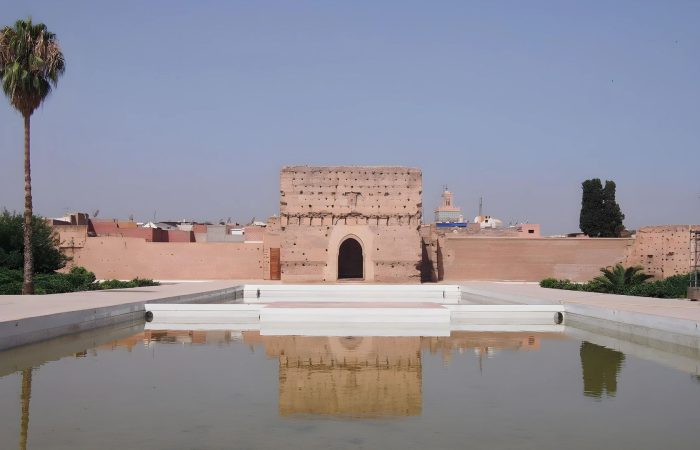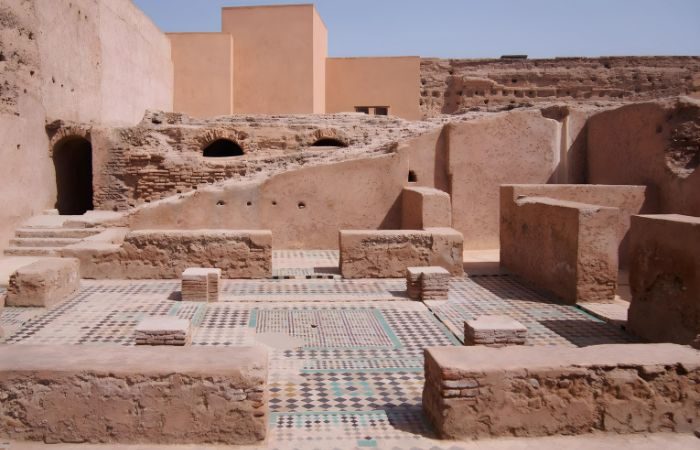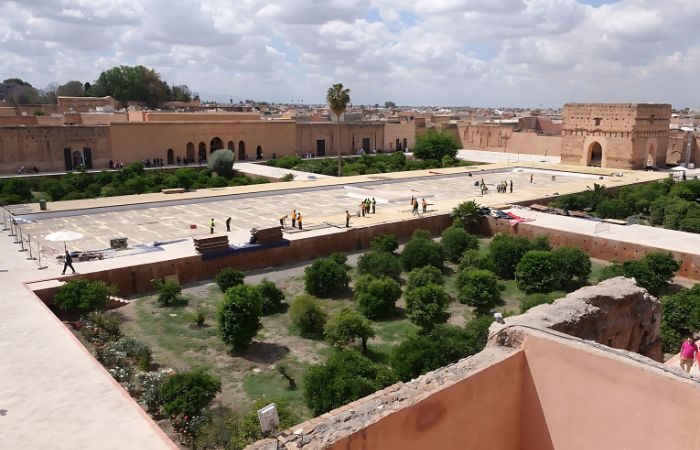Description
El Badi Palace: Exploring Morocco’s Architectural Gem
When it comes to exploring the rich heritage of Morocco, El Badi Palace in Marrakech undoubtedly takes center stage. This stunning architectural marvel showcases the grandeur of the Saadian Dynasty and the intricacies of Moroccan art and design. As a travel enthusiast, I am excited to share with you the fascinating history, unique architecture, and cultural importance of El Badi Palace.
History of El Badi Palace
El Badi Palace was commissioned in 1578 by Sultan Ahmad al-Mansur, a powerful ruler from the Saadian Dynasty. Its construction aimed to epitomize the Sultan’s wealth and influence, making it a grand display of power. The palace’s fusion of traditional Moroccan and European styles adds to its allure. Masterfully adorned with intricate mosaics, marble columns, and ornate carvings, El Badi was a mesmerizing sight to behold.
The palace also served as the residence for the Sultan’s harem, which housed over 500 women. This aspect of the palace reflected both the opulence and cultural norms of the time.
Unique Architecture of El Badi Palace
The Palace showcases remarkable Moroccan architecture at its finest. The palace follows the traditional Moroccan style, featuring a central courtyard surrounded by four wings. The walls are adorned with meticulously crafted mosaics and carvings, while the columns are made from exquisite marble.
The centerpiece of the courtyard is a large pool, encircled by lush gardens and enchanting fountains. Exploring the palace’s numerous smaller rooms, you can almost envision private meetings and grand receptions taking place within these historically significant walls.
Importance to Marrakech
El Badi Palace holds immense significance within the history and culture of Marrakech. Serving as a symbol of the city’s past, it stands as a testament to the grandeur of the Saadian Dynasty. Visitors flock to the palace each year to witness firsthand the awe-inspiring beauty and learn about Morocco’s captivating history.
Beyond being a tourist attraction, El Badi also serves as a vibrant cultural hub. Concerts and art exhibitions are frequently hosted within its premises, allowing tourists and locals alike to immerse themselves in the vibrant arts scene that continues to thrive in Marrakech.
The Transformation of El Badi Palace
Over time, El Badi fell into a state of neglect. After the death of Sultan Ahmad al-Mansur in 1603, the palace started to lose its former glory. With the decline of the Saadian dynasty, the palace eventually succumbed to ruin.
Its valuable materials, including precious marble, were dismantled and repurposed in the construction of other buildings throughout Morocco. However, despite the ravages of time, El Badi remains a captivating sight that transports visitors back to a bygone era.
El Badi Palace stands as a magnificent testament to Moroccan architecture and culture. Built-in the 16th century, it exemplifies the grandeur of the Saadian Dynasty and showcases the intricate artistry that defines Moroccan design. Today, the palace remains a vital part of Marrakech’s heritage, attracting travelers from across the globe who seek to immerse themselves in its rich history.
As you embark on your journey to the Palace, prepare to be captivated by the stunning architecture, the echoes of a regal past, and the vibrant cultural events that continue to breathe life into this remarkable destination.













